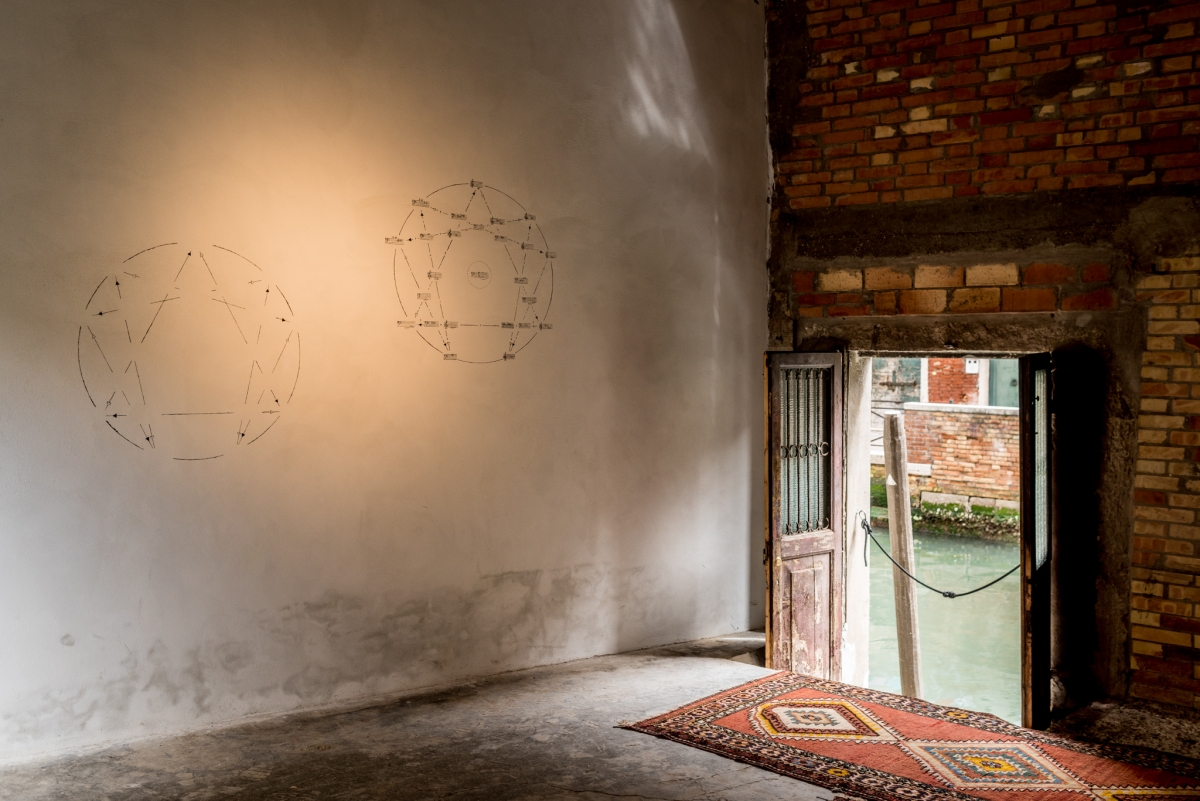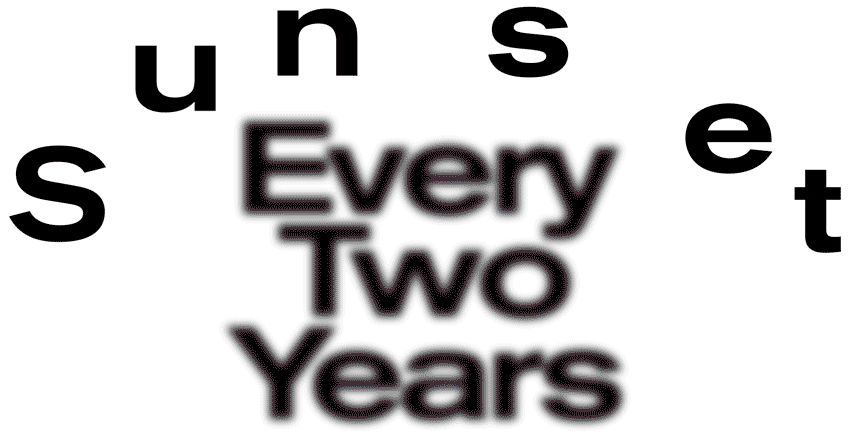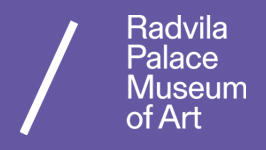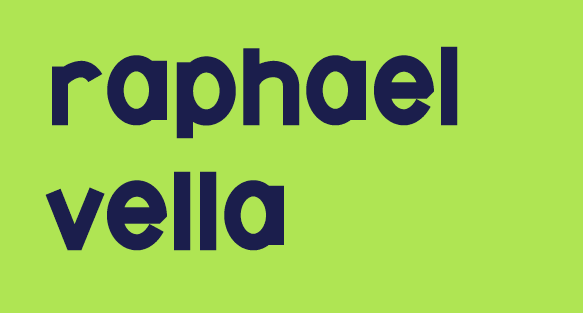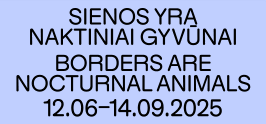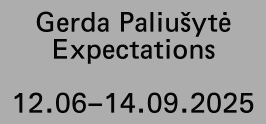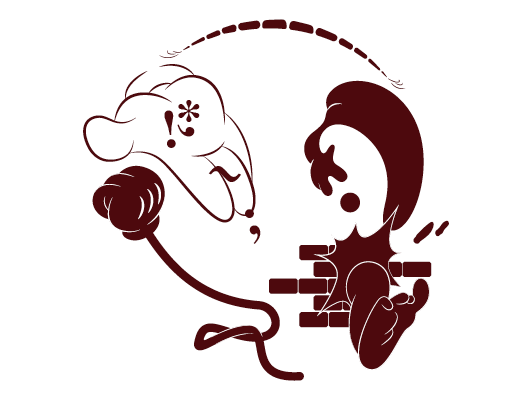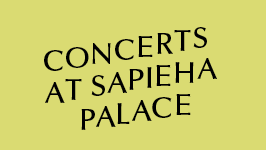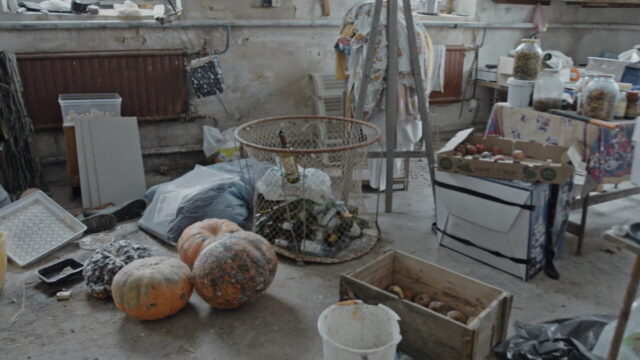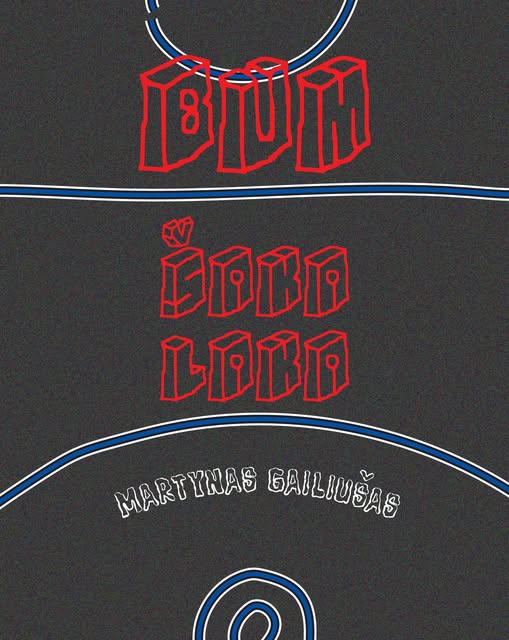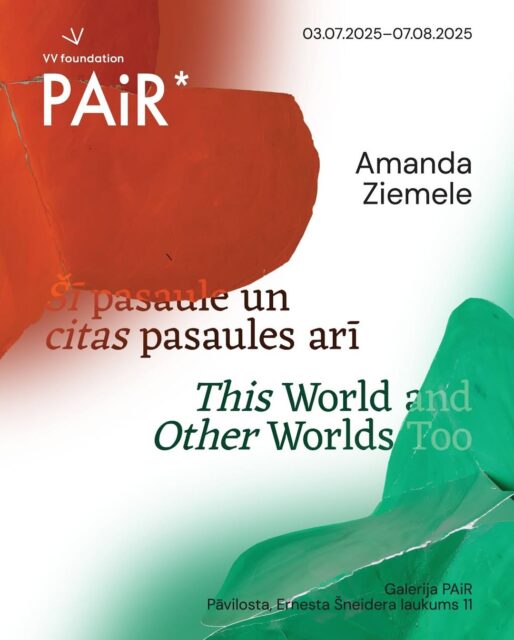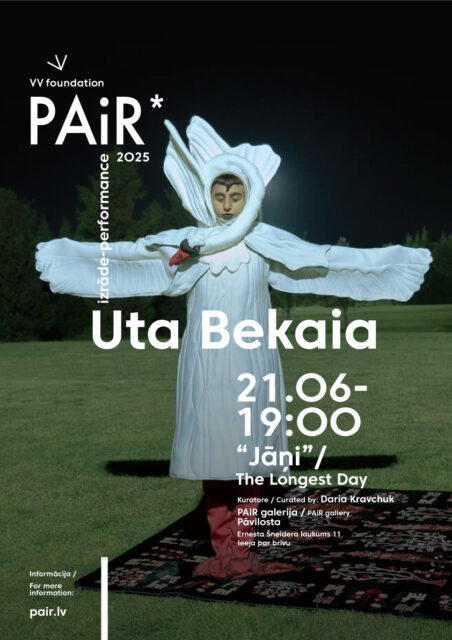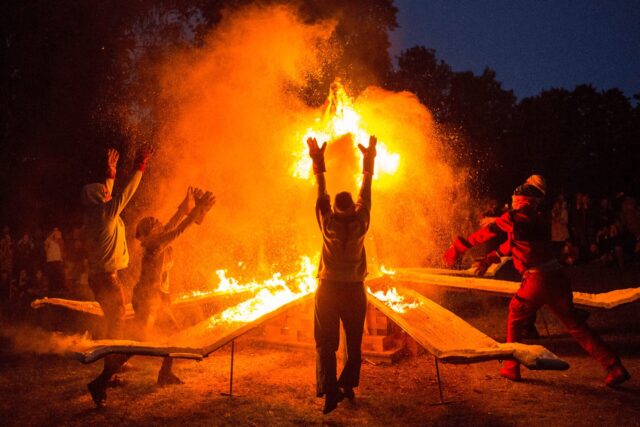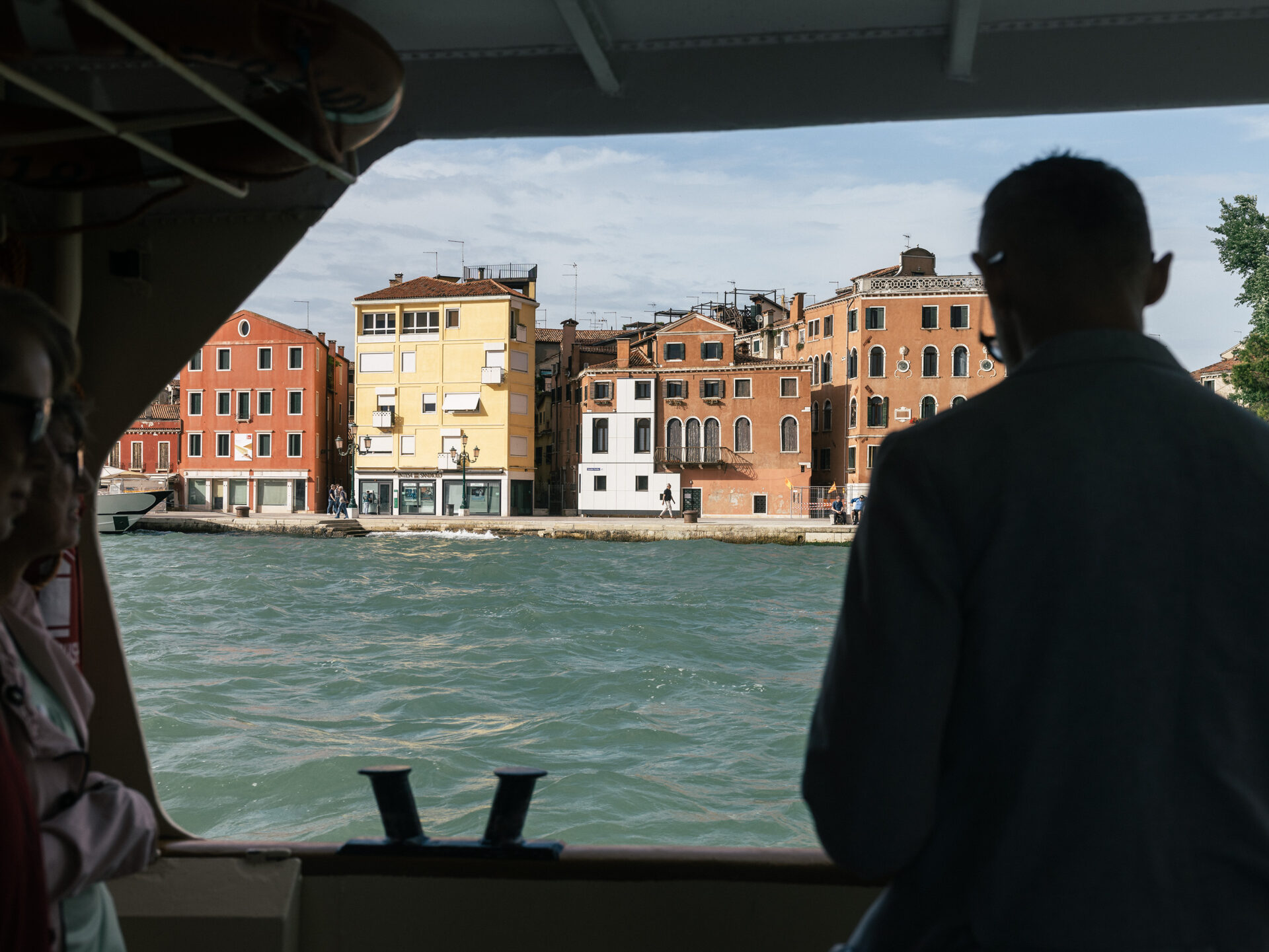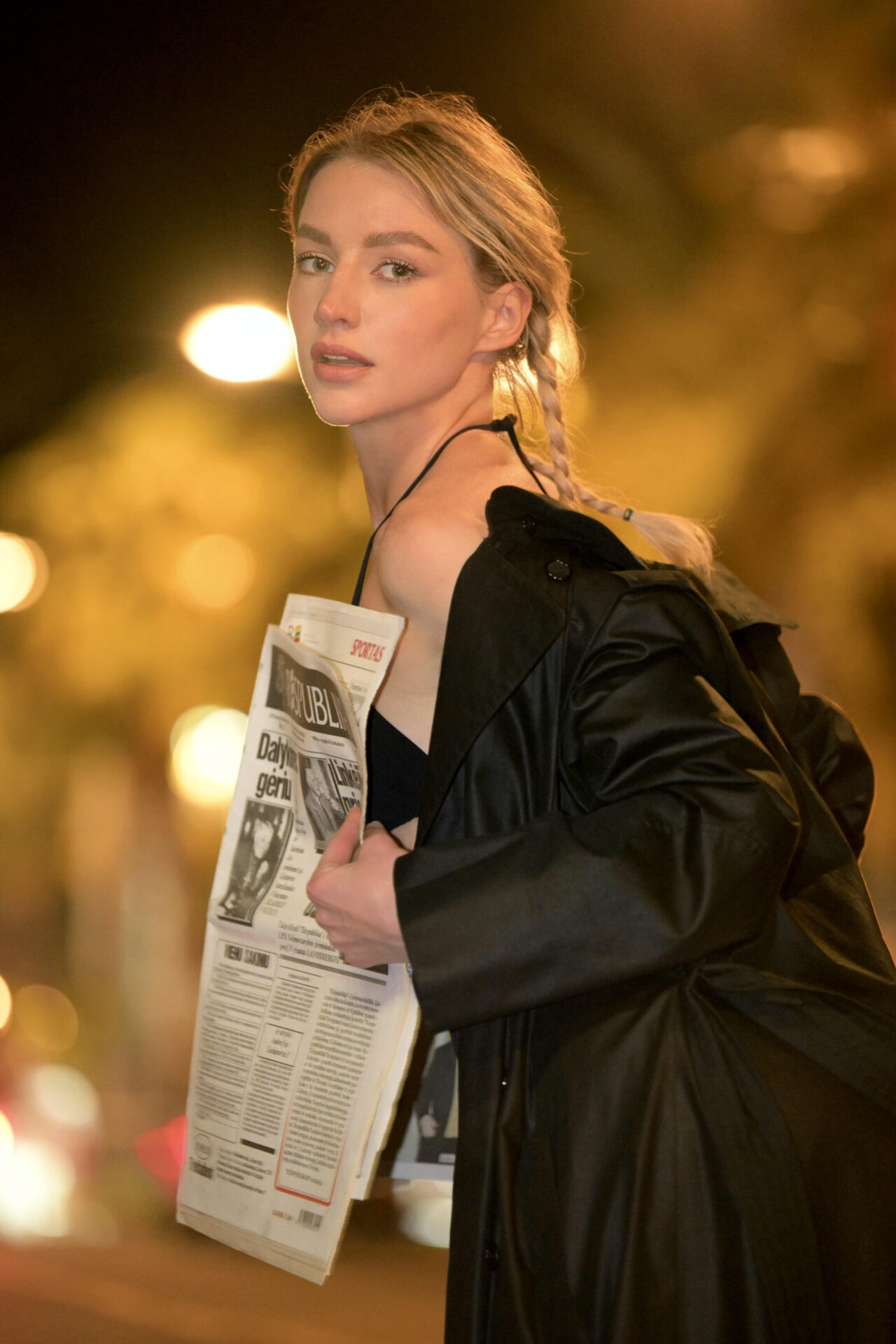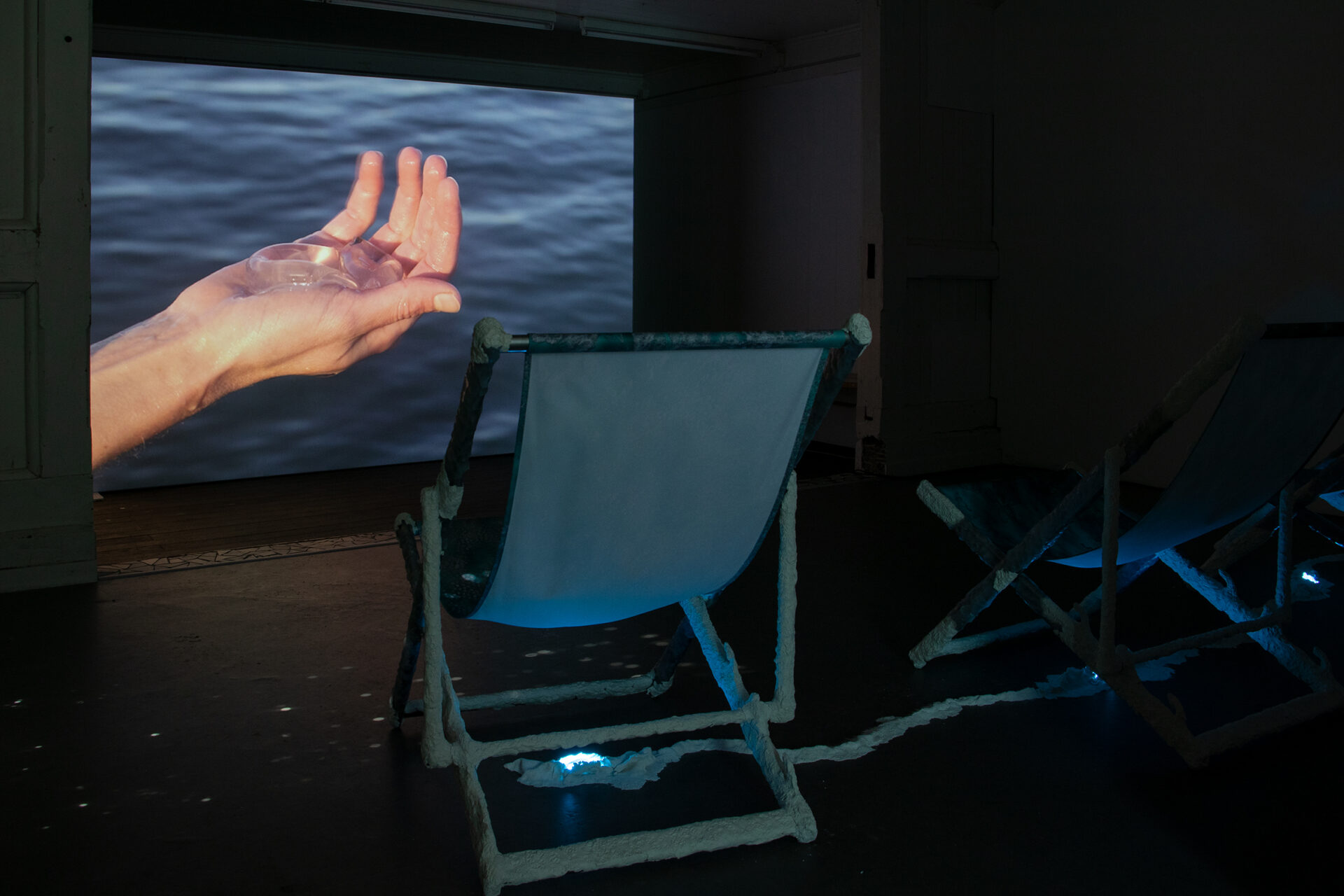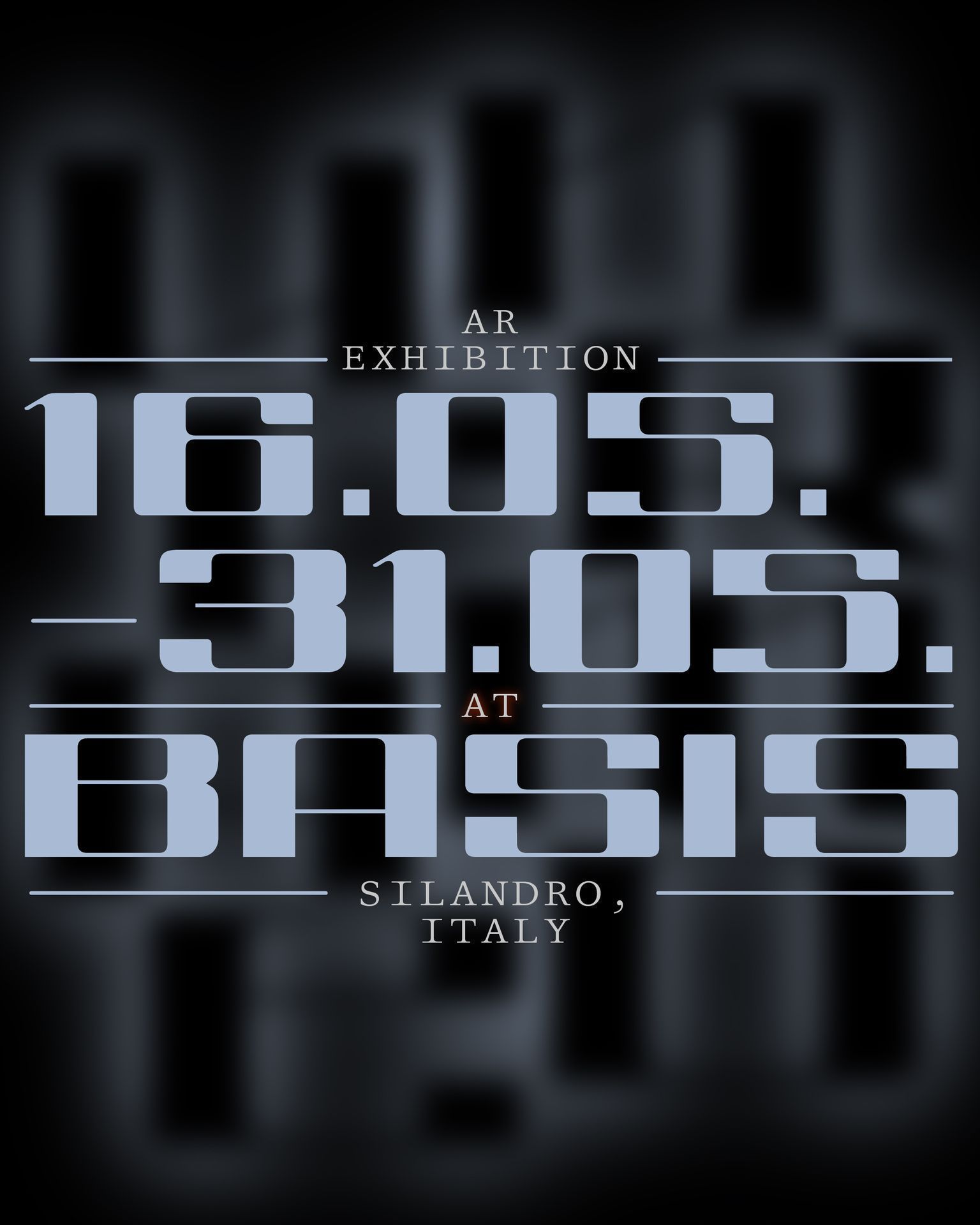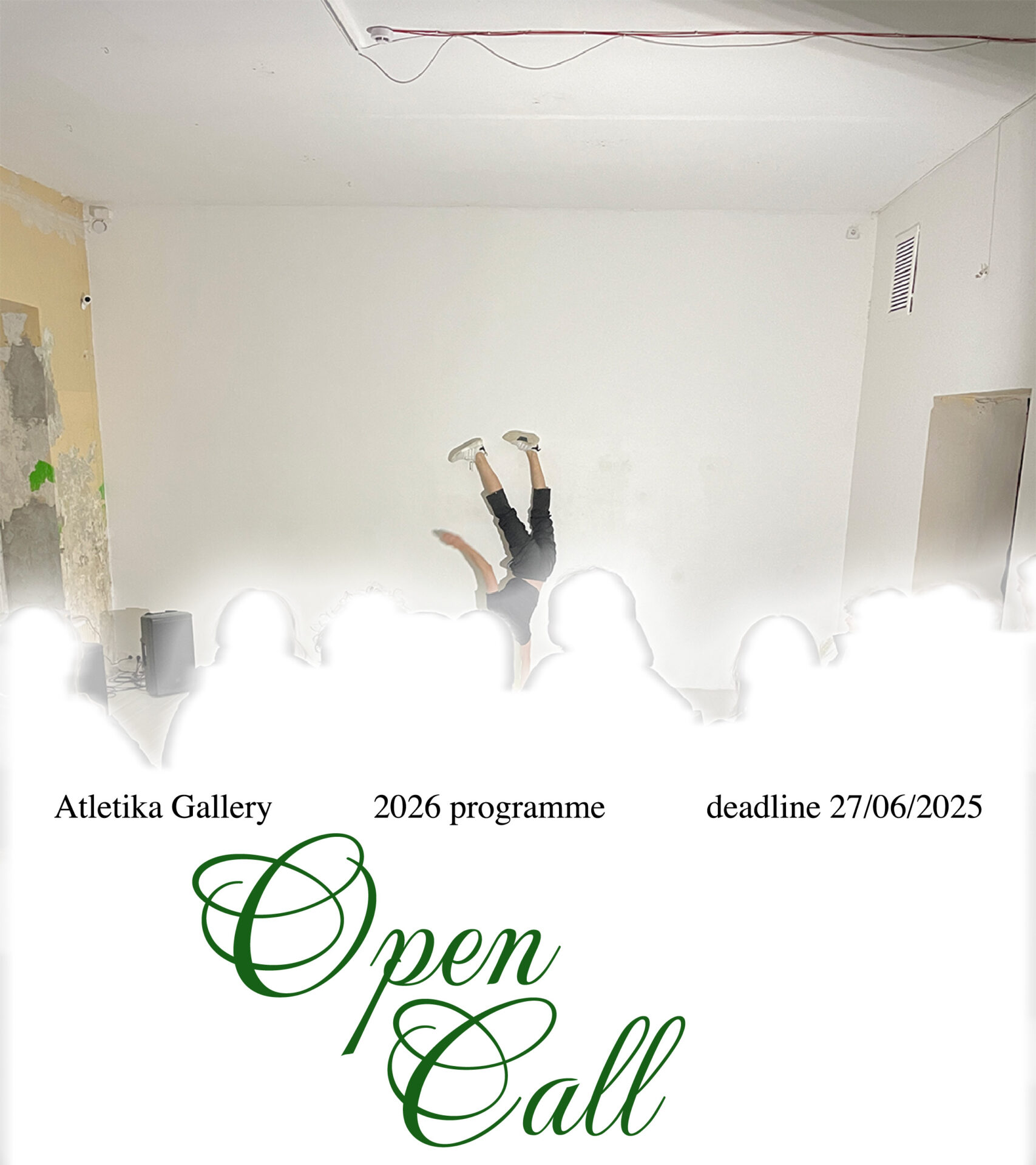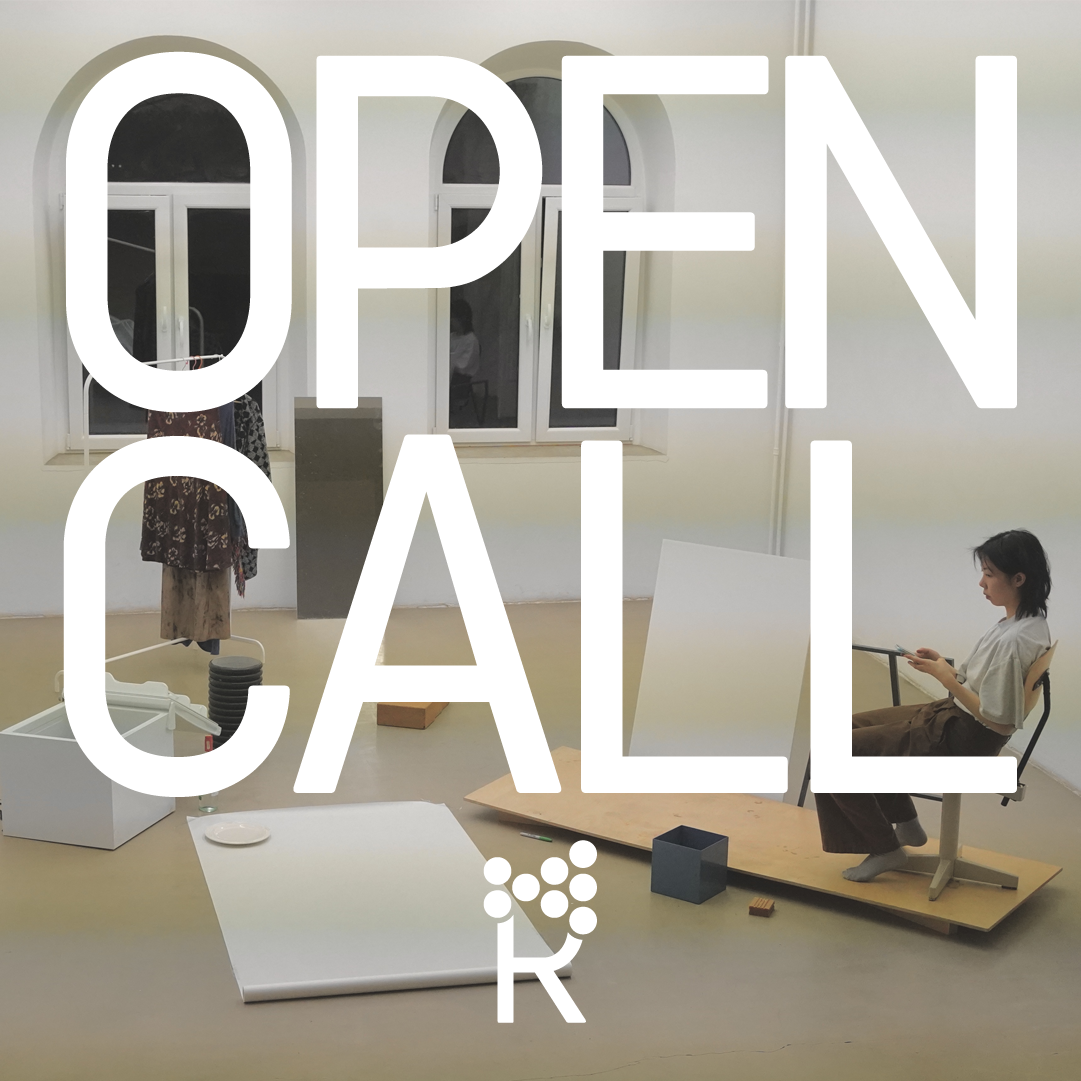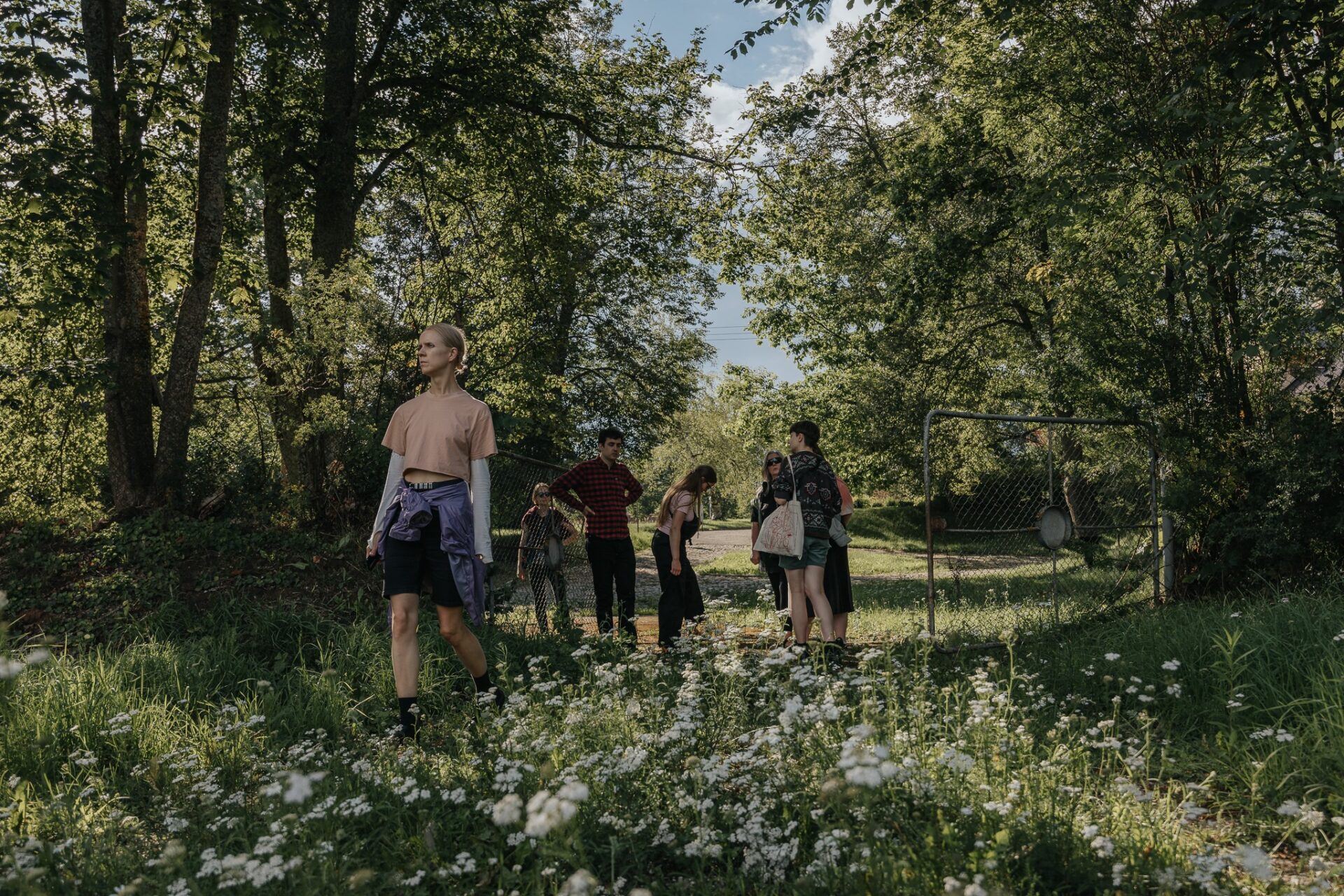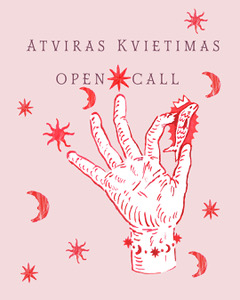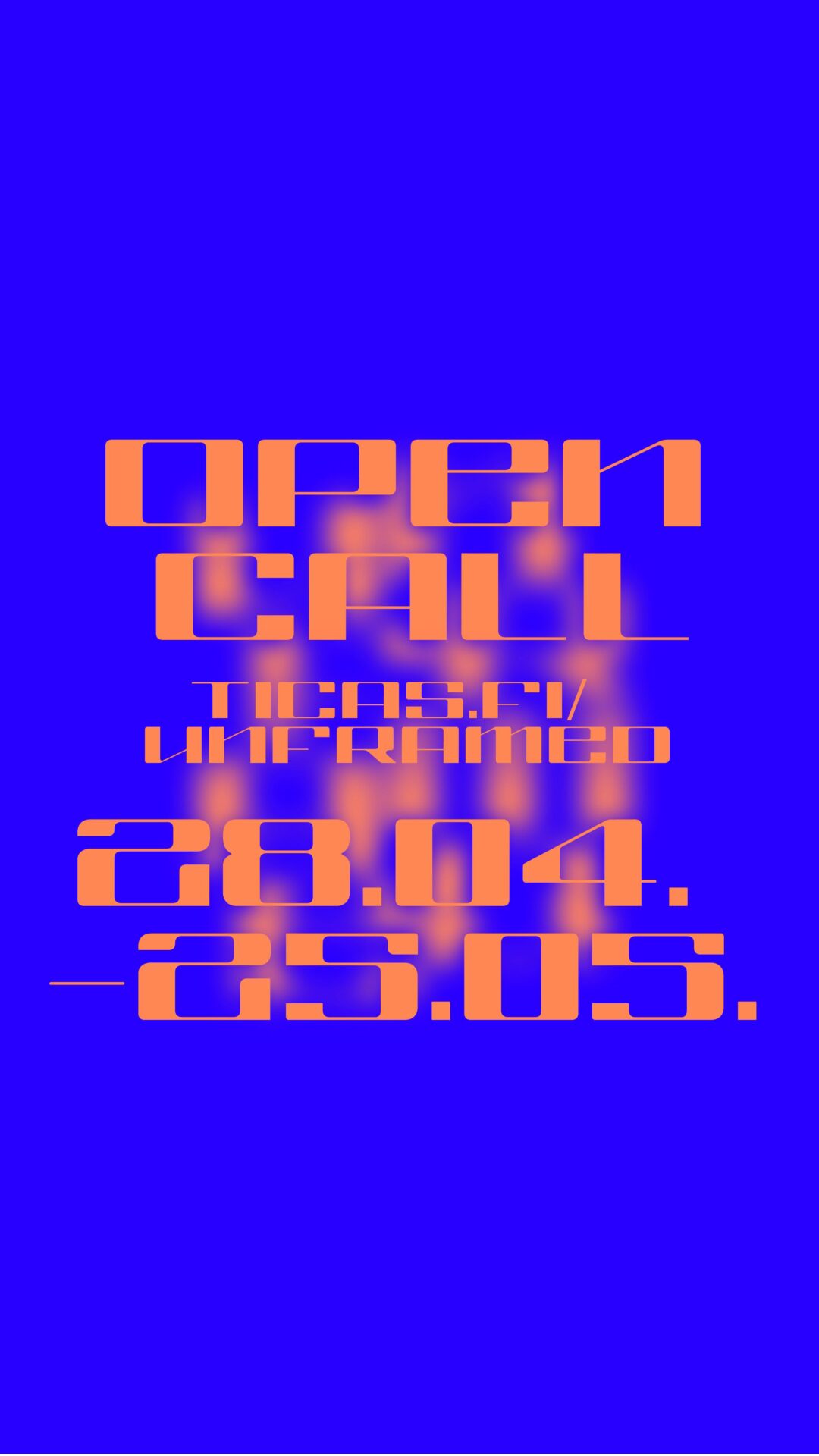This year, Armenia at the Venice Biennale is represented by Lithuanian-Armenian composer and artist Andrius Arutiunian. We had a discussion with him about the Gharīb Pavilion which stood out in the context of the Biennale with its modest elegance and meditative daze, created by the harmonious space of a Venetian apartment, continuously vibrating with sound and whispered incantations.
Gerda Paliušytė: ‘One starts by merely imagining real things. Eventually, the real things manifest themselves’. This is the phrase that greets visitors at the Armenian Pavilion. The bright Venetian apartment with connecting rooms where the exhibition has settled greets us equally welcoming .The sound works and objects here are the reaction to the space by you and pavilion curators Anne Davidian and Elena Sorokina in terms of the attention you gave to their shapes and scale, as well as to the direct relationship between space and sound. The central piece titled You Do Not Remember Yourself — elongated brass instrument heard across the whole space — is its most attentive listener. The pieces of the exhibition are actively and organically attuned to the surrounding space. Was that how you initially imagined the space of the Pavilion? What is the story behind that apartment becoming the Armenian Pavilion?
Andrius Arutiunian: Traditionally, the Armenian Pavilion is located at the Palazzo Zenobio which is a Baroque-style palace belonging to the Armenian Mekhitarist order of monks. Initially, this was supposed to the location of our Pavilion as well, but at the last minute we were informed that due to the hazardous state of the palace this wouldn’t be possible anymore. Then, at the last hour, we somewhat miraculously managed to find a new site – a typical Venetian house with an inner garden and a wharf located right in front of the Arsenale, one of the main venues of the Biennale.
The conditions offered by this space, its light and acoustic qualities defined the flow of the exhibition and how I thought of it together with the two curators. I imagined the Pavilion as a proposal on how do we be and how do we are together, through its musical and political manifestations. Meanwhile, the chamber space of the house immediately suggested its own acoustic circumstances of being together. The house offered a certain lightness; for instance, there are no doors between the rooms, therefore the Pavilion is revealed right from the street, especially when the rooms are permeated by the blazing Venetian sun. So the exhibition evolved as though it was actually still someone’s home where different rooms could offer simultaneous situations of playfulness and concentrated listening.
This apartment has been abandoned for a few years already and it was in a ruin state once we found it, but with the help of the owner (who was born in one of the rooms and bought the place for this sentimental reason) we managed to transform it exactly how I imagined. By the way, after the opening some of our neighbours told us that at different times the place used to house Arsenale’s firemen station, a beer shop, and a bakery by nuns – it has always been a house with many faces.

You Do Not Remember Yourself, Andrius Arutiunian, 2022
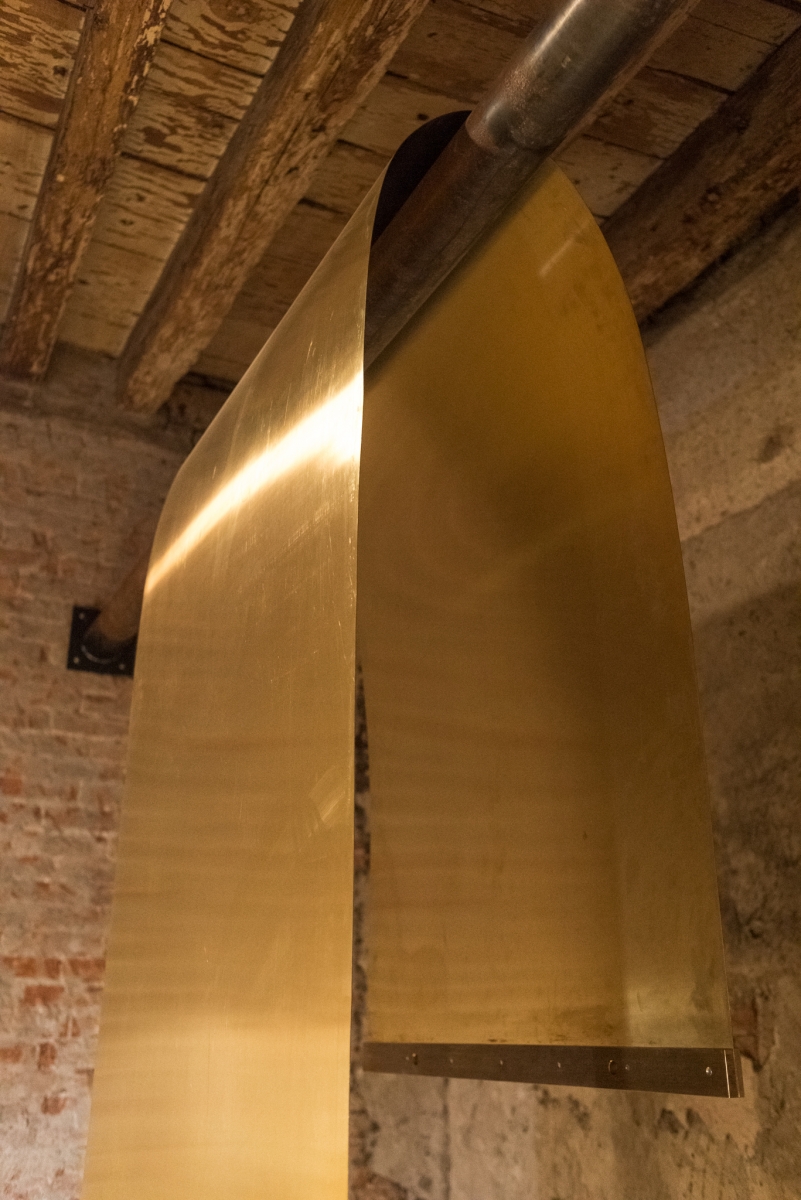
You Do Not Remember Yourself, Andrius Arutiunian, 2022
GP: The intimate atmosphere of the Pavilion is also created by Do Not Fear, Then!, a composition for four voices. It’s performed by Melos, a female collective of vocalists who improvise spells and incantations in the secret Ṙuštuni language that disappeared in the 19th century. There is barely any information available about the Ṙuštuni phenomenon, how did you find (or perhaps made up) this language? What are its origins? What was the process of working with the Melos collective?
AA: The Ṙuštuni language, or argot, to be precise, originated in the town of Moks and was used by its local Armenian community. This argot was invented by the felt makers in order to protect their trading secrets in this isolated mountainous town, which had a large Armenian population before the Genocide.
The production of felt – one of the most archaic textiles – has always been considered a somewhat “dirty” undertaking (for example, due to its usage of mercuric nitrate). The felt-beaters were therefore generally seen as one of the lowest subclasses of professions, occupying a specific social niche with thieves, prostitutes, or musicians. At the same time, felt beating is a heavily ritualised practice, one that employs various incantations and codified gestures. Since the felt beaters would often trade in felt themselves, they have developed the Ṙuštuni as a way of concealing their trade secrets from the sellers of other ethnic groups.
This argot was first discovered by an Armenian professor Karen Yuzbashyan and later researched by Harvard professor James R. Russell, on whose article I based my work as well. The cyphered book they were studying contained examples of the Ṙuštuni argot; a few incantations were mentioned there as well. These spells, which originate from the underworld imaginaries of the felt-beaters are essentially a codified attempt to conjure the supernatural, avert bad luck, and deflect misfortune through apotropaic magic. Some of them mention herbs or minerals from ancient Armenian pharmacopoeia and are often characterised by recurrent words and rhythms. By the way, the title of one of the works Do Not Fear, Then! arose from the enigmatic phrase that frequently ends these spells—it is a beautiful command of accepting the consequences of one’s actions.
Having stumbled upon these words and spells, I asked Melos New Vocal Music Collective to sing and improvise them. The majority of the sounds that I ended up using in the installations were the recorded attempts by the vocalists to pronounce and find the right intonation for the Ṙuštuni. After our recording session I found myself with almost 800 samples, out which I composed the sound for Do Not Fear, Then!. At the same time, the voices of Melos can be heard through the brass instrument too, however, here they have been electronically manipulated and filtered with the natural resonances of the brass material itself.
GP: Therefore, Do Not Fear, Then! is a direct consequence of your consistent investigation of vernacular knowledge, isn’t it?Would a Lithuanian term “folk wisdom” also be appropriate here? Plus, the Gharīb Pavilion is presented as a continuation of your research into the limits of knowledge and forms of world order (in terms of politics and music) beyond the Western imagination. That’s exactly why the keyword of the Pavilion is gharīb, a word that originates from the Middle East that doesn’t have a concrete meaning but carries the sense ‘strange(r)’, acting as an incantation or a spell in and of itself.
In the exhibition, you employ gharīb as dissonance, a contradiction to the prevailing conventions of time, rhythm and tuning. How far does your research go? Has your inspiration to go beyond the limits of the Western imagination been influenced by your education in music composition?
AA: The notion of gharīb has interested me for some years already. It is cryptogenic: its origins are almost impossible to pinpoint, although it can be traced back as far as the Akkadian sources. As professor Michael Pifer writes, ‘the origins of the gharīb stretch back so far into the mists of time that they pre-date many of the most fundamental and basic ways in which we figure the world today.’ Still, gharīb exists in modern Arabic, Armenian, Farsi, and Turkic languages as a term denoting a certain stranger which becomes a part of us. I suppose that the instability of this word’s origins shouldn’t surprise us; it belongs firmly to every one of these languages and at the same time remains an almost foreign body within each of them.
On the other hand, gharīb has always been linked to models of political and cultural resistance that essentially question the powers in place. Gharīb is permeating Middle Eastern and Caucasian imaginaries as a word closely linked to songs of resistance, illegal psychotropic substance trade, or music making – activities that have always opposed the existing models of oppressive power and political organisation.
The question of how such model could exist within the contemporaneous conditions was important while imagining the cosmology of the Pavilion. That is why I use the term vernacular knowledge instead of ‘folk wisdom’. The former is the knowledge that essentially questions the dominant powers and is at ease with its possible contradictions or complexity. Folk wisdom, on the other hand, is linked with a general knowledge spread through a concrete nation or peoples, whereas I am more interested in knowledges that originate beyond the centres of dominating narrative. To put it simply, I am far more interested in the translocal rather than the ethnic.
That’s where the alternate ways of knowledge acquiring (in opposition to the hegemonic Western ideology) came in; in other words, those often overlooked models of imagining or shaping reality. To me, sonic forms, musical time, and collective ways of music-making provided the perfect place to try out and speculate with these ideas within the listening space.
For quite some time already, the field of sound art and experimental music has allowed these small islands to emerge where artists look for ways of reorganising musical (and therefore inextricably political) entities. Such composers as Éliane Radigue and Robert Ashley have had a big impact on me, both of whom create on their own idiosyncratic outskirts of the Western canon. Also, my studies in experimental music have enabled me to imagine what the very nature of sound could be for me, to rethink its purpose beyond the music itself. Deep time, resonance (both as a musical and historiographic phenomenon) and decentralised ways of music making—these are the topics that interest me since they act as relevant strategies to navigate the too often normative, hegemonised field of sound art.
While extensively researching these topics, I stumbled upon G. I. Gurdjieff, an Armenian-Greek composer, mystic and philosopher, who was also called charlatan by some. He was one of the first to introduce the idea of syncretic Eastern philosophy into the Western imaginaries. In a sense that is what probably gave him this dubious reputation, as he is also often referred to as the “godfather of New Age”. In any case, his complex esoteric texts, proposals on ways of being together or the relationship between musical and divine tuning, and the principles of world ordering have become important elements in our Pavilion too.
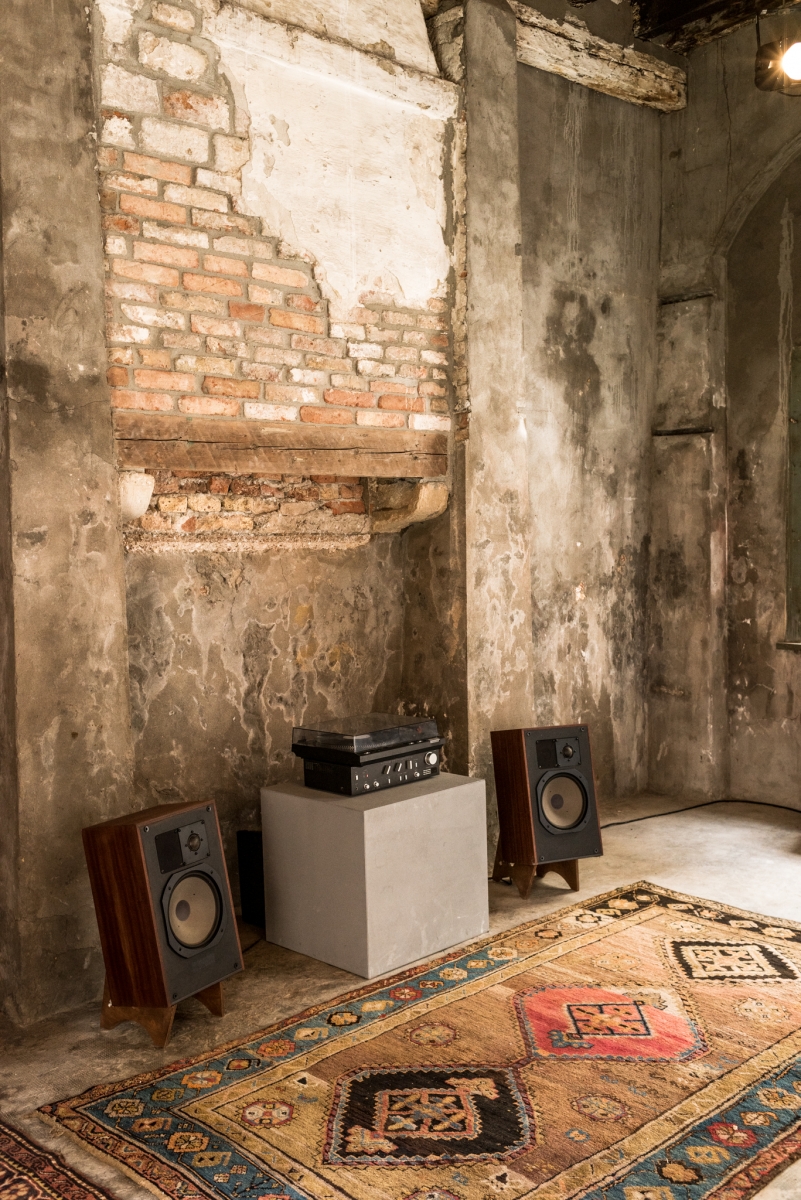
Seven Common Ways of Disappearing, Andrius Arutiunian, 2022
GP: Your musical score Seven Common Ways of Disappearing is also related to G. Gurdjieff—you created it by employing Gurdjieff’s enneagram. Could you tell a bit more about your creative method and how the geometric figure (Gurdjieff’s model of world order) eventually became a composition for piano four hands? I think it’s important to note that this composition can be heard in a room open to the outside; as the sounds intermingle with the bustle of the city, you can see the ripples of a nearby canal through the door.
AA: This piece has undergone a few transformations. First, it was conceived as an open score, then as a vinyl and finally as a sound installation. At the centre of the work is an enneagram – a model of world ordering proposed by Gurdjieff connected, among other things, to tuning and digestion. Whereas tuning has been a great interest of mine for a while now: how do we tune our voices, instruments or bodies with each other? After all, most of contemporary music (as in ‘the music that is made today’) is based on one specific tuning system that was been designed to fulfil the needs of Western music in the 18th century and then spread across the globe due to colonialism. At the same time, this system does not reflect the needs of say Armenian, Tajik and Ethiopian music, nor does it make sense within the contemporary music forms. On the other hand, up until the Enlightenment age, the question of tuning was one of the most contentious topics in both music, mathematics, mysticism and philosophy (even Plato famously condemns certain musical modes in his Republic as corrupting the youth and causing disorder).
Modern technologies can often deepen the dependency on this Western sonic logic; one only needs to look at auto-tune technology, which tunes voices automatically into a predetermined, codified musical system. Here I also often think of the book by Jace Clayton (DJ Rupture) called “Uproot: Travels in 21st-Century Music and Digital Culture“, in which the author mentions an encounter with Berber musicians. Unable to make the auto-tune adhere to their own intricate melodic lines, they adopt and subvert the software pushing it to its limits, whilst inventing an entirely new sound. In such way, this ‘messing’ with the technology and the domineering system becomes a beautiful strategy of sonic resistance.
Coming back to Seven Common Ways of Disappearing, it is primarily concerned with the questions of tuning and attunement. The work is written for a grand piano – the epitome of Western music – whose 230 strings have been retuned using the system that was proposed by Gurdjieff. The score is open in duration, and as you mentioned, it uses enneagram as its graphic shape – a method proposed by Gurdjieff of dividing a circle and the world itself into nine points. Even though the enneagram was later appropriated by the New Age movement, it remains one of the most fascinating mathematical and mystical models offering diverse interpretations. Once I figured out that you could add musical objects to it, it naturally became a score – the musicians navigate the sonic events in an open manner, while at the same time they have to find a way of working together, remaining in-tune so to speak.
At the Pavilion, Seven Common Ways of Disappearing takes shape as an installation which is playing continuously throughout the day. I frescoed the enneagram score of the piece on the wall, while on the floor among the carpets there is a vinyl player repeatedly spinning the recording of this score. The rippling water and its reflections on the walls and ceilings worked well here – the space became a place of gathering, with visitors coming back to in on multiple occasions, to rest or to half-dream. You enter into a sort of liminal space, a strange symbiosis of retuned piano sounds in a former gondola wharf.
GP: When you speak of Gurdjieff, you almost never forget to mention that he was considered a charlatan. Why is that important to you?
AA: Firstly, the persona that Gurdjieff has created and meticulously maintained is only one side of him. But I am much more interested in this character rather than his philosophy itself, Gurdjieff’s ability to create contradictions, to wreak havoc and confuse. Such ‘charlatanism’ can be read as a intentional strategy of being, as Baudrillard writes: ‘cipher, do not decipher.’
Charlatanism as a practice exists in the periphery already, beyond normativity, as a certain method of playfulness, a trickster philosophy. Therefore, Gharīb allows me to investigate such practices and manifestations of vernacular knowledges in a critical manner. So Gurdjieff finds a place in the Pavilion as one part of its cosmology, while I consciously maintain a certain distance from his philosophical or esoteric proposals.

Gharib Oghi, Andrius Arutiunian, 2022
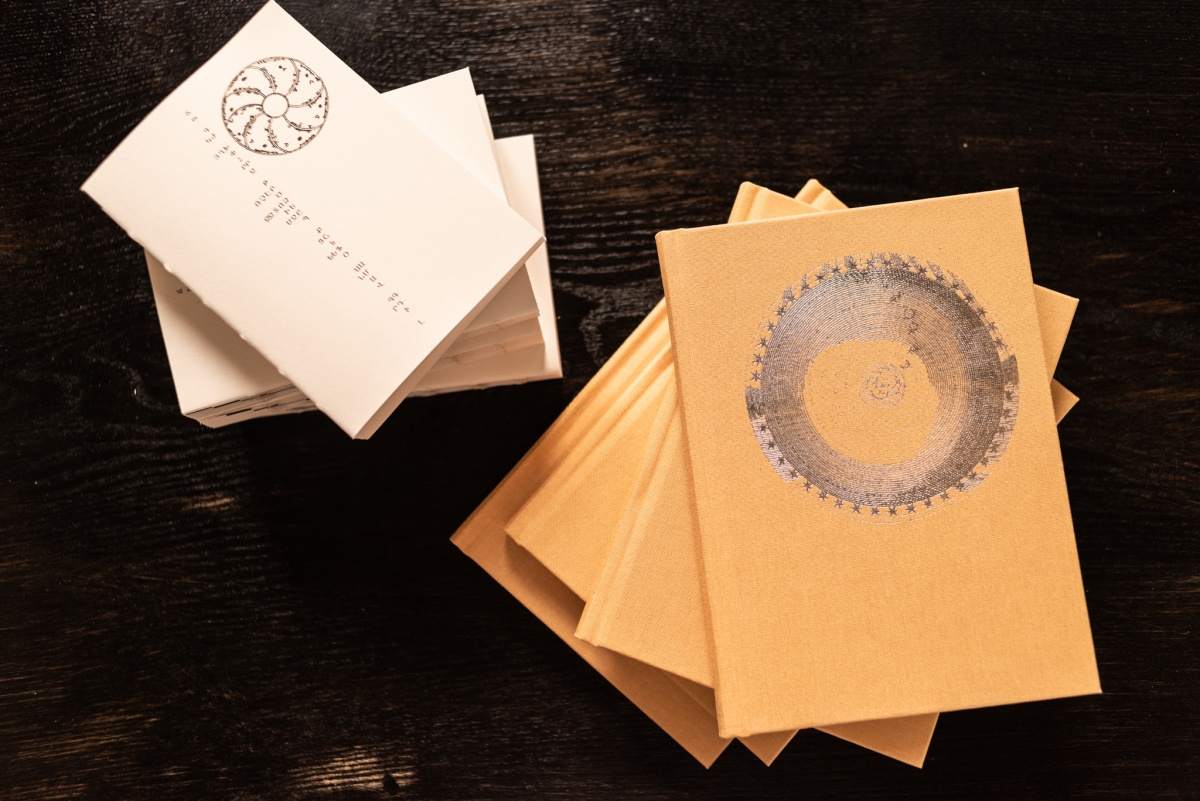
Publications of the Gharīb Pavilion
GP: Thank you, Andrius! The last question I want to ask is: why did you choose the Armenian alcoholic drink called oghi? Its deep scent and taste have become an inherent part of the Pavilion, at least during the opening day.
AA: Oghi became an important part of the exhibition as part of the Gharīb’s publications, hinting at intoxication as a transformative act. In Armenia, this moonshine is made from home-grown fruits or berries such as mulberries, which in turn have their own unique mythology. The leaves of mulberry (Morus alba) are the sole source of nutrition for silkworms whose cocoons are used in silk-making, while the mulberry itself is often associated with mystical or transgressive qualities (for instance, in Ovid’s Metamorphoses, mulberry absorbs the blood of lovers who commit a suicide under its branches, turning her fruits from white colour to red).
In Armenian culture, oghi is seen as a symbol of hospitality and it is an important part of welcoming a guest or stranger into one’s home. By the way, Gurdjieff’s model of being together was also concerned with collective intoxication and the idea of experiential transformation. And so, together with the Artsakh factory in Armenia we created a limited-edition series of aged Gharīb Oghi. It is meant to be consumed while reading two of our Pavilion’s publications: The Book of Gharīb, a limited artist-edition with essays by Anna Della Subin, Jason Bahbak Mohaghegh and myself on sleep, sonic resistance and gharīb cosmology. The second publication acts as a pocketbook version of the Pavilion and consists of texts that were relevant to the exhibition—stories, hearsay, recipes and incantations in various languages from different times; it’s a collection of peripheral knowledges that has become an integral part of Gharīb.
They take Yemeni alum, oak galls, and white sulfur, one part each, and pound them till smooth. Then they add wine vinegar and grind it till it becomes like an ointment, which they then make into things like acorns and dry in the shade. They rub one of these over the ink in whatever ledgers they fancy and the writing is erased; it disappears, leaving no trace at all.
Al-Jawbari, The Book of Charlatans
